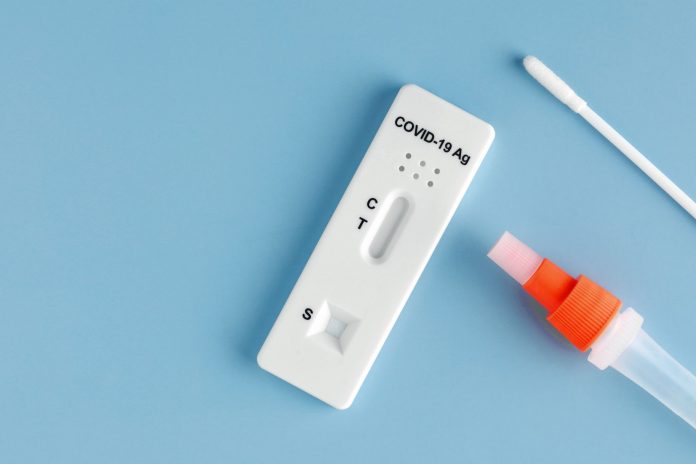While most health experts support the use of rapid antigen tests (RATs) for surveillance testing, some concerns are being raised about their potential for false positives and negatives and invalid results.
Health authorities are now being called upon to start collecting data on both negative and positive rapid antigen test results, to better monitor the pandemic.
Data indicates the Therapeutic Goods Administration (TGA) has received 114 complaints about rapid tests, with 94 relating to those used in laboratories or point-of-care environments such as workplaces, and aged and residential care facilities, and just 20 reports related to self-tests, which became available for home use in November 2021.
Graham Gordon CEO of Gardian and developer of Gardian Test Tracker and the Self Check app, believes it is important that people understand their underlying risk of developing Covid-19 and the differences between products before using rapid antigen tests.
“In addition to their actual exposure to someone with Covid-19, whether they have been in a venue where there have been positive cases, whether they’ve been vaccinated, and if they’ve had any symptoms, there are a further six key reasons why you may receive a false negative or false positive and most of them relate to how they undertake the test.”
With an estimated 90% of the population glossing over instructions assuming most of it can be figured out by using common sense, health officials are advising people that not all products are created equal – varying from moderately to very highly sensitive – and that following the prescribed directions is vital to getting a valid test outcome.
Storage and stability
Irrespective of what format or brand it is, a rapid antigen test is an in vitro diagnostic device and should be stored in a cool (not frozen) and stable temperature. One cannot obtain a rapid antigen test from the pharmacy and then leave it in a hot car for half an hour while you purchase groceries or have coffee with a friend. Rapid antigen tests should be stored between 2 and 30 degrees Celsius, kept away from direct sunlight, moisture and heat. There are also expiry dates that need to be adhered to.
Hygiene and safety measures
Prior to starting the test, the instructions for use will instruct the user to have a clean, flat surface on which to work and to wash their hands with soap and water or use a hand sanitiser, but they may not stipulate that there is a specific way to remove the swab and the test cassette without incurring contamination. Once again, users should bear in mind that the test is a medical procedure, and the conditions should be kept as sterile/clean as possible.
Time allocations
Every rapid antigen test has specified time restrictions and allocations relating to a correct procedure, whether that be the time period that one should not smoke, eat or drink prior to a test, how long the cassette or swab should be used or the waiting period before interpreting the result. There is even a time limit for how long one can have the test open prior to testing, and how long the test is valid for. The instructions for use are specific for a reason and should be followed to the letter.
Collecting the sample
The physical process of collecting a sample is not always as simple as it seems. Nasal samples may be collected from different areas of the nasal passage, and they are not all correct. Based on the images of people undergoing PCR tests, some people believe that the sample should be collected from the top of the nose, but the ideal sample is one collected horizontally just above the nostrils, approximately 2cm in. Obviously, if the sample is not collected properly, one cannot achieve a true result.
Transference of the buffer solution
Seemingly simple, but next to collecting the sample, this step may be the most challenging for users. Most rapid antigen tests include a pipette that needs to be twisted open and the buffer solution transferred to a plastic vial. If the solution is spilled or shaken at all there may not be sufficient solution to detect the virus, and any bubbles generated may interfere with the result.
Furthermore, for those with any form of finger weakness, dexterity or vision problems, the manual handling of a multiple step process may be challenging. Placing too few or two many drops of the sample solution onto the cassette may impact on the result.
Cassette sensitivity
Once placed on the clean, flat surface with the ‘reader’ facing upwards, the test cassette should not be touched until the allocated time has passed and the result has been identified. All too often, the cassette is picked up and moved or reviewed before it should be, and this can lead to inaccurate performance.
Ultimately, any one of these factors, or a combination thereof, could lead to a false or invalid result.
“The biggest risk with rapid antigen tests is when people are falsely reassured by a false negative, adds Mr Gordon. “If they are to undertake any behaviour that could facilitate spread, that would be a serious thing for everybody.
“Obviously, if you think you’ve got a reasonable or a high risk of having Covid-19 because you have symptoms or are living with someone with Covid-19 and you have a negative rapid antigen test, then that may be a false negative. You should take precautions and retest within 24 or 48 hours or get a PCR test.”










